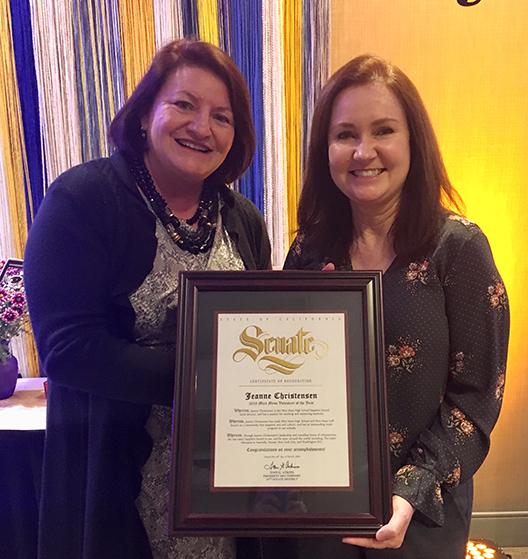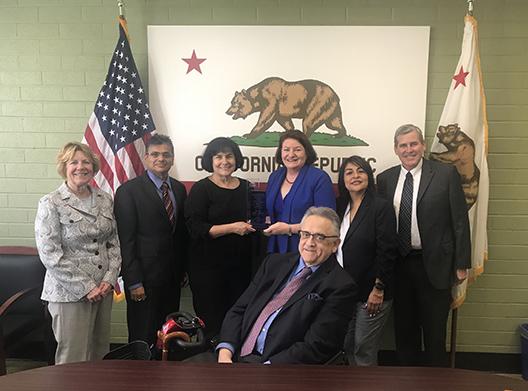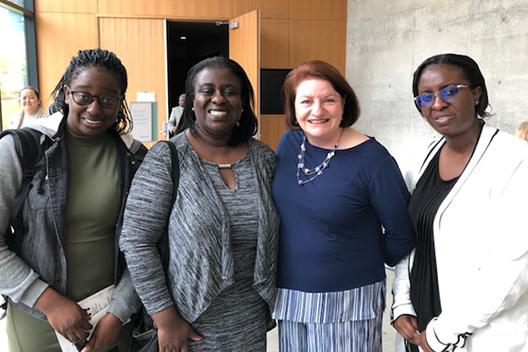May 2019 Newsletter
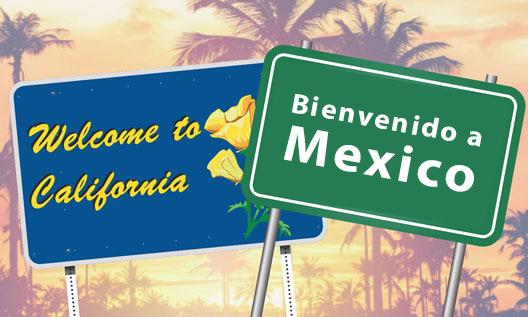 |
Recently, the President talked about closing the border between the United States and Mexico. That would be a monumentally terrible idea, and fortunately, he quickly changed his position, first saying he would wait a year and then saying he didn’t think he’d ever have to close it.
I hold hope that if he changes his mind again, he would ultimately listen to the chorus of voices saying such a move would be economically and culturally devastating for the San Diego region, California and the country, and carry damaging ripples into the global economy.
Mexico and California have become inextricably linked – and that’s a good thing! Mexico is California’s largest export market, supporting more than 566,000 jobs north of the border.
If Baja California were a country, it would be San Diego’s second largest trading partner, behind only Mexico itself. The collective manufacturing supply chain for our binational mega-region (San Diego County, Imperial County and Baja California) accounts for $2.5 billion in trade.
Numerous companies in our region have a robust cross-border presence, such as Cubic, Becton Dickinson and Company, and Kyocera. Cubic, for example, has 400 employees in Tijuana. The defense and transportation-technology company’s southbound exports are worth more than $59 million per year, and its northbound imports account for nearly $33 million.
An average of 137,000 border crossings between San Diego and Tijuana occurs every day, with people traversing the international boundary for work, school and tourism. More and more Americans are living in Mexico and commuting across the border, due in part to the rising cost of living in California and thanks to the vibrant culture of Tijuana and beyond.
The Valle de Guadalupe wine region, for instance, is experiencing tremendous growth and has become an enormously popular destination. Tijuana is rich with cutting-edge visual artists and innovative culinary experiences.
Meanwhile, the Cross Border Xpress, the world’s first binational airport terminal, connecting the United States with the Tijuana Airport, has become an increasingly common way for San Diegans to travel by air. Nearly 2 million passengers used the Cross Border Xpress in 2017.
On a bipartisan and widespread basis, elected officials, business leaders and other regional advocates understand that this economic and cultural exchange is extremely good for San Diego County, California and Baja California.
I will continue to be an enthusiastic supporter of all efforts to bring our two countries, and our peoples, together.
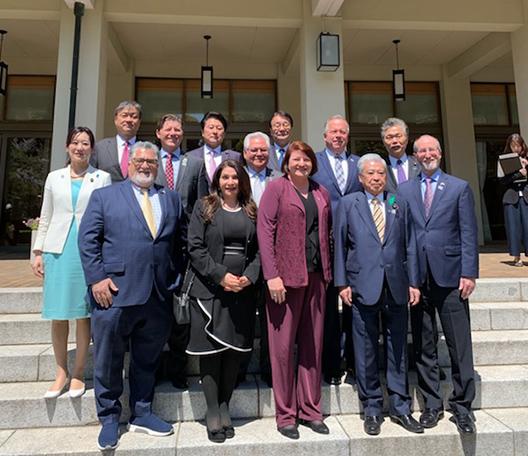 It was a pleasure to visit the National Diet (Japan’s Congress) and spend some time with the Honorable Chuichi Date, President of the House of Councilors (second from right on bottom step). |
During the Legislature’s weeklong spring recess in April, I was proud to lead a delegation of senators on a visit to Japan to engage with Japanese government and business leaders on a range of issues in which their country and our state share interest.
Senators Bill Dodd, Anthony Portantino, Steve Glazer, Brian Jones, Susan Rubio, Bob Archuleta and I traveled to Tokyo, Osaka and Kyoto. This was my first time in Japan, and I can tell you we were welcomed with open arms.
In Tokyo, we met with company officials at Takeda Pharmaceuticals, one of the largest health care companies in the world – with a new research center in San Diego – to discuss universal health care. From that visit, I came away more solid in my belief that we must work on health care and aging as one combined policy issue.
Also that day, I had the pleasure of meeting Eiichi Hasegawa, special advisor to the Prime Minister of Japan, and Rear Admiral Tatsuya Fukuda of the Japan Maritime Self-Defense Force, who has participated in combined military exercises, including in San Diego. And the full delegation met with ruling Liberal Democratic Party members of the National Diet, which is Japan’s equivalent to our Congress.
On Day 2 in the nation’s capital, we discussed plans for the Tokyo Olympic Games in 2020 and the Los Angeles Games in 2028 with Maki Kobayashi of Tokyo Organizing Committee of the Olympic and Paralympic Games. Tokyo is doing a great job of involving all of Japan in their games, with sports venues being prepared throughout the region and volunteers coming from across the country and all over the world. I’d like to see us to do the same with Los Angeles and California.
Later, we visited the National Diet and met with the Honorable Chuichi Date, President of the House of Counselors and some of his members. The House of Councilors is Japan’s equivalent to the U.S. Senate.
Our busy day concluded with meetings with the Parliamentary Vice Minister of Economy, Trade and Industry, and the Japan Business Federation. We talked about how we can support Japanese businesses located in California – and how they benefit both of our economies. As of 2016, Japanese companies were responsible for the creation of 120,000 jobs in our state.
In Osaka, we took a fascinating tour of Daikin Industries, the world’s largest manufacturer of heating, ventilation and air-conditioning products, and met with company leaders to learn about Daikin’s environmental technologies and discuss our shared climate-change goals. California is leading the U.S. in fighting climate change, and Japan’s goals are similarly ambitious.
That afternoon, we met with Jun Arai, Vice Governor of Osaka, and discussed the G20 Summit that will be held in Osaka in June, as well as the continued cooperation between California and Japan on a range of issues. Osaka and California signed a sister-state agreement in 1994 and participate in educational exchange programs involving high school students, teachers and public officials.
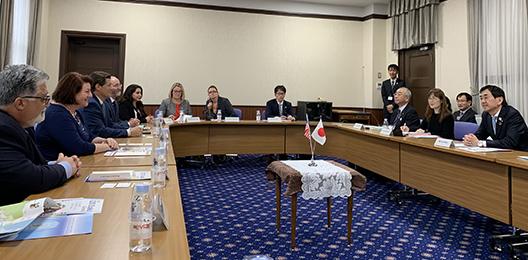 Meeting with the Honorable Jun Arai, Vice Governor of Osaka (right). |
We took a brief trip to Kyoto from Osaka, and back again, and the high-speed shinkansen train was remarkable in its speed, ease, efficiency and comfort. It brought us straight to the doorstep of the Osaka Airport. We can certainly learn some things from Japan when it comes to mass transit!
All in all, the trip was incredibly informative and productive. Japan and California in 2014 signed a memorandum of cooperation on climate change, renewable energy, trade and investment, zero-emission vehicles, high-speed rail and water. More than 100 cities in Japan have sister-city relationships with cities in California – San Diego’s first-ever sister-city agreement was with Yokohama, Japan, in 1957! And the California Senate has sent delegations to Japan 17 times.
We can make our world smaller, friendlier and mutually beneficial by continuing this kind of diplomacy and in-person exchange of ideas. As the leader of California’s Senate, I will wholeheartedly support respectful and robust cooperation with anyone outside our borders who wants to create a better life for everyone.
Since the California Competes Tax Credit program began five years ago, local businesses have done disproportionately well. Roughly as many San Diego companies have received awards as companies in Los Angeles County, which is more than three times as large.
And when the latest round of awards was announced on April 11, San Diego County businesses really excelled – nine of our companies received $19.3 million in tax credits by pledging to make $247.4 million in capital investments and create 772 new jobs. Local businesses received 25% of the 35 awards given out statewide, even though our county has just 8% of the state’s population.
Receiving awards were Cubic ($8.5 million tax credit to create 300 jobs), SAFC ($4 million, 116 jobs), Avexis ($3 million, 121 jobs), Bitchin Sauce ($1.75 million, 76 jobs), Eddy Pump ($900,000, 30 jobs), Star Manufacturing ($830,000, 93 jobs), Broken Token ($150,000, 14 jobs), Sidus Solutions ($125,000, 17 jobs) and Mule Inc. ($56,000, five jobs).
Since 2014, San Diego County companies have received 180 tax-credit awards worth more than $140 million by pledging to make $2.5 billion in investments and create more than 16,000 new jobs. Statewide, the program has provided nearly 1,000 awards worth $890 million to create almost 100,000 new jobs.
In last year’s budget, the Governor and the Legislature renewed the program for five years, with $180 million in funding per year.
This program is a great economic-development tool for our region and all of California. If you’re interested in applying for a tax credit for your business, visit http://www.business.ca.gov/Programs/CaliforniaCompetesTaxCredit. You can also contact the San Diego County Regional Economic Development for assistance at 619-234-8484.
On March 1, 2019, San Diego Gas & Electric began the process of transitioning all of its customers to what is called a “time of use” rate. Under this system, customers pay different prices depending on when they consume power. Previously, customers would pay based on their total electricity usage, regardless of when they were using electricity.
In this new rate structure, the more electricity a customer uses when California, as a whole, has less electric resources at its disposal, the more they pay. On the other hand, if they use electricity when demand is relatively low and there are more sources available to manage – such as wind, solar and other sources of power – customers pay less. Prices are most expensive from 4 p.m. to 9 p.m.
While customers are transitioning, and to better adjust to the new rate structure, there is a one-year bill protection, meaning that in the event a customer pays more through this new rate structure than they would have paid under their previous rates, the customer will receive a credit for the difference.
After the first year, SDG&E will provide an individualized written comparison between standard and time-of-use rates to each consumer so they can see which plan makes more sense to them. It is important for consumers to review this document closely so they can adjust their energy usage to off-peak hours and save on their energy bills.
I encourage you to review the SDG&E website, which explains time-of-use rates in detail: https://www.sdge.com/whenmatters. In particular, pay close attention to the video titled “Time-of-Use is about Choice,” which explains how you can adjust your energy usage to save electricity – and money. If you have further questions, call 800-411-7343.
The legislative action is in full swing in the Capitol, and our various policy committees’ agendas are loaded with bills aimed at addressing an array of challenges facing San Diego and all of California. As we head toward the house-of-origin deadline – the May 31 deadline for Senate bills to clear the Senate and Assembly bills to clear the Assembly – here’s an update on my bills this year:
SB 1 – the California Environmental, Public Health, and Workers Defense Act of 2019 – is California’s “insurance policy” against the reckless deregulation happening at the federal level. SB 1 ensures that any federal environmental or worker safety standard in place as of January 19, 2017, remains in effect under state law even if the federal government rolls it back. SB 1 has cleared the Senate Environmental Quality, Natural Resources and Water, and Judiciary committees.
SB 52 makes it easier for Californians to get financial aid for technical and occupational training that can pave the way for high-wage careers that support middle-class families. This bill recognizes the timelines that many Cal Grant C applicants face and adjusts the process to make applying for financial aid more reasonable. SB 52 has cleared the Senate Education Committee.
SB 66 allows clinics and rural healthcare providers to bill Medi-Cal for two visits on the same day if patients receive mental health treatment on the same day they receive other medical treatment. This will help ensure healthcare providers can continue to deliver vital mental health services and be reimbursed for those services. SB 66 has cleared the Senate Health Committee.
SB 165 is the next step to ensure that limited English proficient Medi-Cal enrollees have qualified in-person language interpreter services when they visit their medical provider. The bill is a follow-up to AB 635, which required a study of the issues surrounding medical interpreters and create a four-site pilot project. SB 165 has cleared the Senate Health Committee.
SB 451 creates an economic-development tool by establishing a tax credit for the preservation and rehabilitation of historic buildings in California. To qualify, the property must be on the National Register of Historic Places or the California Register of Historical Resources. The applicable credit will be for 20% of the qualified rehabilitation expenditures, and would offer a 5% bonus on top of that if certain criteria are met. California is one of 15 states that do not have a state-level historic preservation tax credit. SB 451 has cleared the Senate Governance and Finance Committee.
I will continue to provide updates on all of my bills as they work their way through the legislative process. Please feel free to contact my terrific, hard-working district staff for the latest information from the Capitol: 619-645-3133.
|
Social Media Corner |
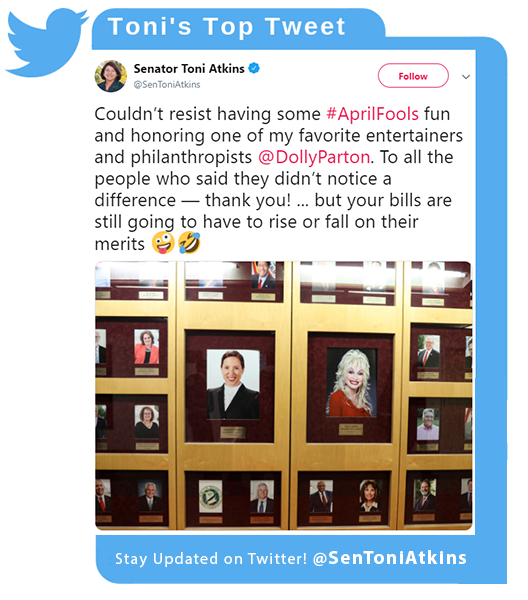 |
 |
My district staff is always available to help constituents navigate a complex web of state agencies. If you’re having trouble working out an issue with any state agency, please call my office at 619-645-3133, and my staff will do everything in their power to help.
|
My District Staff |
Where to Find Me Online
|
My district office is located at 1350 Front St., Room 4061, San Diego, CA 92101.
|
|
|
|
|
|
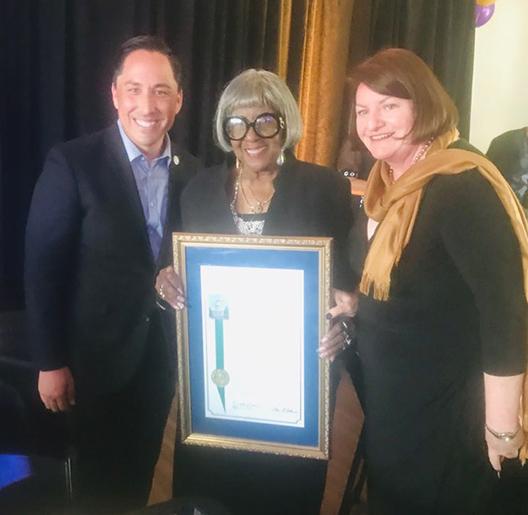 At the Living Legend Celebration for Kathleen Elizabeth Harmon. A true trailblazer! |
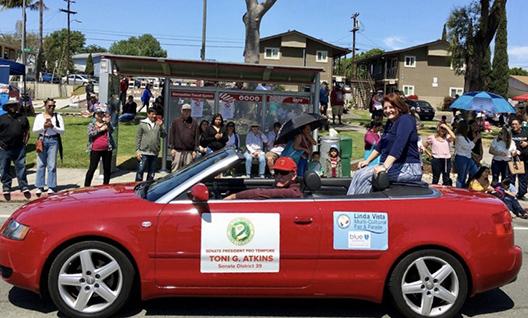 At the Linda Vista Multicultural Fair and Parade – one of my favorite events in District 39 because it celebrates the diversity of our great city. |
|
|

